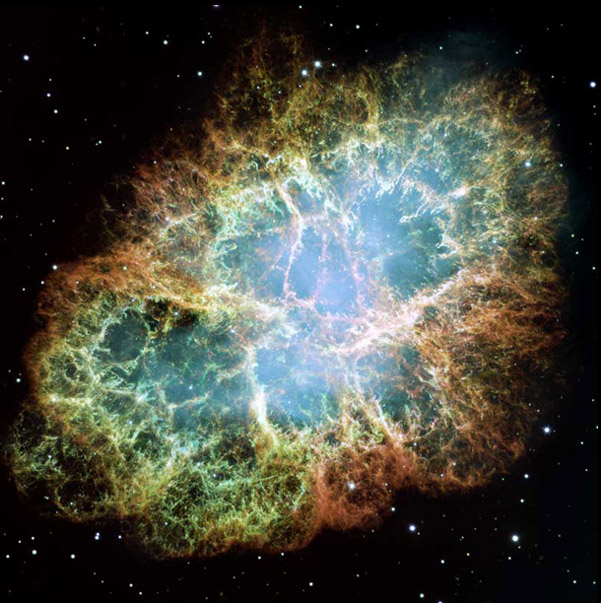The Crab Nebula

This composite image was assembled from 24 individual exposures taken with the NASA Hubble Space Telescope’s Wide Field and Planetary Camera 2 in October 1999, January 2000, and December 2000. It is one of the largest images taken by Hubble and is the highest resolution image ever made of the entire Crab Nebula.

The supernova which produced the Crab Nebula was observed by the Chinese in 1054 AD. It is positioned in the constellation Taurus and is about 2 kiloparsecs away from Earth. Chaisson & McMillan quote the distance at 1800 pc with an extent of about 2 pc. The nebula has been a rich source of information. It contains the fastest known pulsar at 0.033 seconds period.
The discovery of the optical and RF signals from the same source was important in that it gave a probe of the number of free electrons in space between us and the pulsar. The dispersion,or slowing of the RF compared to the visible gave the figure of about 1 electron per 30 cm3, using the distance to the Crab Nebula obtained by other methods. The Crab pulsar is slowing at the rate of about 10-8 sec per day, and the corresponding energy loss agrees well with the energy needed to keep the nebula luminous. Some of this luminosity takes the form of synchrotron radiation, requiring a source of energy for accelerating charged particles.
Supernova concepts
Nebulae